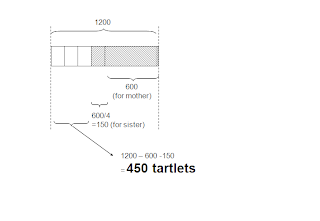Singapore primary school mathematics has adopted the "Model Approach" in solving "Problem Sum" questions some years ago. I started to learn and practice this method when my daughter was in Primary Five 4-5 years ago and I found it extremely useful. The technique looks very different from the traditional method I learned during my school time. However, once you master the basic I believe all (almost) problem sum questions can be tackled with ease, hopefully :-).
In this blog, I hope to convince you that we do not have to use algebra (eg, x=3y+4, y=x-2) to solve your kid's primary school mathematics. As the proverb says "A Picture Is Worth A Thousand Words", I will use models instead of spending a lot of words in trying to explain how I come to the solution.
A few tips in starting your "model":
- Start drawing blocks on the paper, you don't have to draw in scale. Just draw it neatly.
- Label things, people, ...
- Put in the known number(s)
- Put in question mark(s) to indicate unknown to be found.
- Assign a "u" unit for easy reference, if applicable
- Do not put too many details in one model, try to use a few models and draw vertical lines to ensure alignment.
Below shows two sample models for most of the typical questions.








